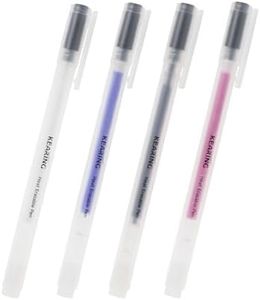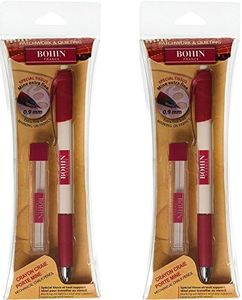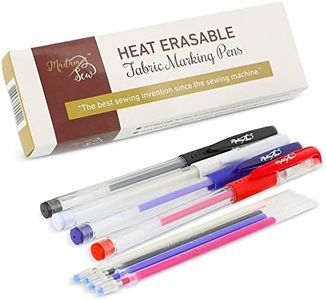We Use CookiesWe use cookies to enhance the security, performance,
functionality and for analytical and promotional activities. By continuing to browse this site you
are agreeing to our privacy policy
10 Best Quilt Marking Pens
From leading brands and best sellers available on the web.Buying Guide for the Best Quilt Marking Pens
Choosing the right quilt marking pen can make your quilting process smoother, neater, and more enjoyable. The best pen for you will depend on your fabric type, the marks you need to make, how temporary those marks need to be, and how you plan to remove them. It's important to consider the pen's ease of use, the visibility of its marks, and how safely it interacts with your fabric to avoid any permanent stains or damage.Mark Removal MethodThe mark removal method refers to how the marks left by the pen can be erased or washed away. This is crucial because, after you finish quilting, you don't want visible marks remaining on your quilt. Common removal methods include water-soluble (washes out with water), air-erasable (fades away on its own), or heat-erasable (disappears with ironing). Water-soluble pens are ideal for projects that you can easily wash, air-erasable pens work well for quick projects, and heat-erasable pens are great if you frequently use an iron. Your choice will depend on how long your project will take and how you prefer to remove markings. If you often leave projects unfinished for a while, air-erasable marks may disappear too soon, so opt for water- or heat-soluble options.
Line VisibilityLine visibility refers to how clearly you can see the pen's marks on your fabric. This matters because, during quilting, you need marks that are visible enough for guidance but not so bold that they are hard to remove. Pens come in various colors and opacities, and some are specifically designed for light or dark fabrics. For light fabrics, choose pens with darker ink, while on dark fabrics, look for pens that use white or metallic ink. Match your pen color to your fabric tone and consider choosing one that's just visible enough for your eyes but not overpowering.
Pen Tip TypePen tip type is about the size and shape of the pen's point, which affects the thickness and sharpness of your markings. Thin tips are best for detailed, precise lines, like tracing patterns or making fine adjustments, while thicker or broader tips may be better for bold, visible lines or marking large areas. If your quilting involves intricate patterns, opt for a fine tip. If you mostly need to mark larger areas or straight lines, a medium or broad tip might be more suitable.
Fabric CompatibilityFabric compatibility means how well the pen works on different types of fabric without causing damage or leaving permanent stains. Some markers are specially formulated for delicate fabrics, while others may be too harsh or difficult to remove from certain materials. Always check that the pen is designed for use with your chosen fabric type, and when possible, test it on a fabric scrap before marking your quilt. If you frequently work with several types of fabrics, look for a versatile pen that promises safe removal across various materials.
Longevity of MarksLongevity of marks refers to how long the markings will stay visible on your fabric before fading or disappearing. This feature is important based on how long you plan to work on your project. Some pens are designed for temporary marking and disappear in a short time, while others will last until you intentionally remove them. If you tend to finish your quilting quickly, a temporary or air-erasable mark might work great. However, if projects take you a while or you prefer to spread your work out, look for pens whose marks last longer or can be removed on demand.
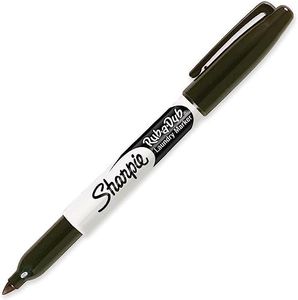
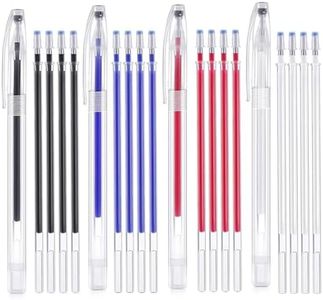
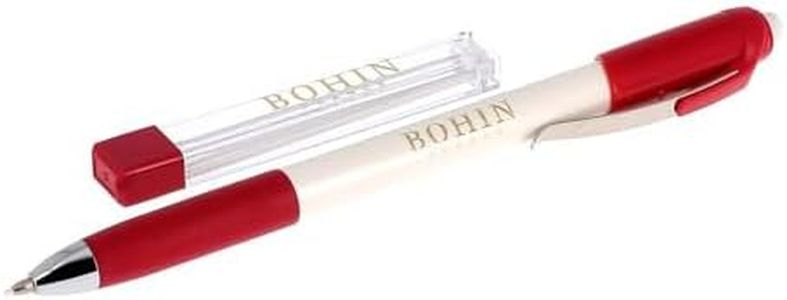
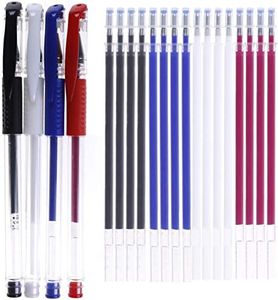
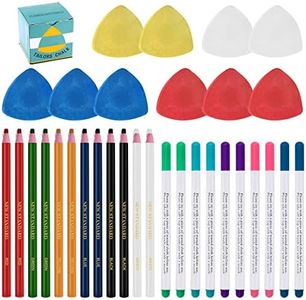
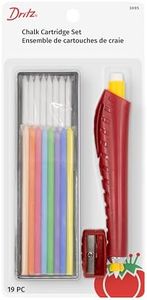
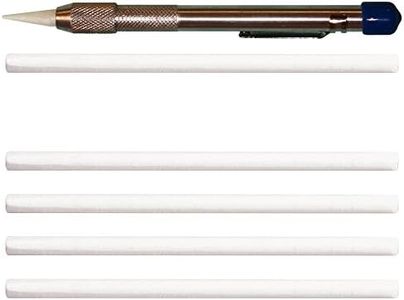

![LEONIS Water Erasable Fabric Marking Pen Blue 5 Count Pack [ 78008 ]](https://images-proxy.bestreviews.guide/YNhzfzRLlyUplrL9omOmpVi1am8=/0x300/https://m.media-amazon.com/images/I/41z8SEIoPNL._AC_CX679_.jpg)

